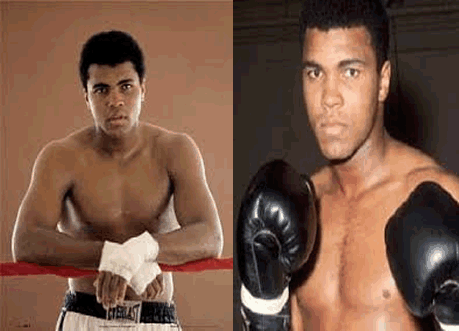When Cassius Clay stepped into the ring
for the final match in the 178 lbs (80.7 kg) class at the 1960 Olympics in
Rome, Italy, it marked the dawn of a new era.
At 18, Clay was still a relatively
unknown young boxer from Louisville, Kentucky. It was 4 years before he would
win the heavyweight championship of the world, over Sonny Liston; 6 years
before he would convert to Islam and change his name to Muhammad Ali; and 11
years before the first of his three epic battles with Joe Frazier. To most
Americans, Vietnam was still a remote and unfamiliar country in Southeast Asia.
John F. Kennedy had not yet been elected president. The social turmoil of the
1960s, which would catapult Muhammad Ali to fame far greater than that of the
boxing ring, had yet to begin.
But the young Clay was already brash and
mercurial, a magnetic personality whose boundless energy and ceaseless
boasting, along with his mesmerizing skill and speed in the ring, captivated
the Olympic crowds.
A natural fighter, Clay was rangy and
powerful, with uncanny hand and foot speed for a man 6 ft 3 in. His great
natural gifts allowed him to ignore some of boxing's fundamental rules: He
often threw punches while moving backward, and instead of ducking under punches
he would lean back, out of range. His long arms and his gliding, dancing style
kept him beyond most opponents' attacks, and he could put together dazzling
combinations of punches.
His personality suited his style. Clay
was one of the first athletes to see himself as a performer, and he played his
part to the hilt. His confidence and verbal ingenuity were evident early on: In
1957 the trainer Angelo Dundee, who would occupy Ali's corner in many of his
greatest bouts, was sitting in a Louisville hotel room with light heavyweight
Willie Pastrano when the phone rang. Dundee answered. It was Clay, phoning from
the lobby.
“My name's Cassius Marcellus Clay,” the
15-year-old said. “I'm the Golden Gloves champion of Louisville, Kentucky. I'm
gonna win the (national) Golden Gloves, and I'm gonna win the Olympics in 1960,
and I want to talk to you.”
Under Dundee, Clay compiled a 100-8
win-lose record, won two consecutive national Amateur Athletic Union of the
United States (AAU) championships as a light heavyweight, and captured two
straight Golden Gloves titles, as a light heavyweight in 1959 and as a
heavyweight in 1960.
In Rome, Clay was the toast of the
Olympic Village. A reporter of the time wrote, “If anyone had held an election
for mayor of the Olympic Village, Cassius Clay would have been a prime
candidate.” He won his first bout, against Yan Becaus of Belgium, in a
second-round knockout. In succeeding rounds he won decisions over Gennady
Schatkov of the Soviet Union and Tony Madigan of Australia.
In the final, the New York Times
reported, “Clay battered the Pole (Polish fighter Zbigniew Pietrzykowski)
mercilessly in the last round with a flurry of left and right combinations that
had his rival groggy. He opened a cut over the Pole's left eye and almost
finished him.”
The decision was unanimous, 5-0 in
favor of Cassius Clay. Clay had danced and taunted his way to victory, showing
the world a new kind of fighting and a new kind of fighter: voluble, cocky, and
rebellious.
And the brash young fighter who won
gold in Rome in 1960 would become one of the most celebrated athletes of the
20th century.






